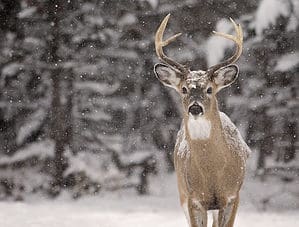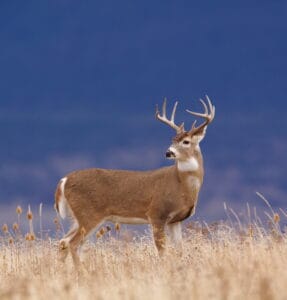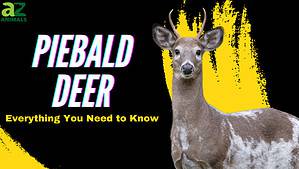West Virginia is a well-known destination for hunters. In fact, many avid hunters will travel across the country to the state for its diverse terrain and abundant wildlife population. The state features picturesque Appalachian Mountains terrain and lush forests, among other landscapes. This makes it the ideal location for various types of animals, including 72 mammals, 39 reptiles, 352 bird species, and many more.
One of the most common wildlife species in the state is the white-tail deer (as well as rabbits, gray foxes, opossums, skunks, raccoons, black bears, squirrels, coyotes, red foxes, deer, and more). As a result, this makes hunting — especially for deer — a popular sport within the state. In fact, over 200,000 resident and non-resident hunters target white-tails in the West Virginia woods each year.
Here are seven reasons why West Virginia is the ideal sport for deer hunting in the U.S.
1. Abundant Deer Population
As stated above, West Virginia has an abundant deer population — specifically white-tail deer. In fact, there are 550,000 deer in West Virginia. These majestic creatures can be found all over the state in various terrains, from forests to open fields.
Another name for the white-tail deer is the Virginia deer (due to its prevalence in Virginia). This type of deer has a bushy white tail and is a top target for hunters. They can run up to 30 miles per hour, jump up to 10 feet in the air, and swim up to 13 miles per hour, which helps them escape hunters and other predators. These deer are most active at dawn or dusk.
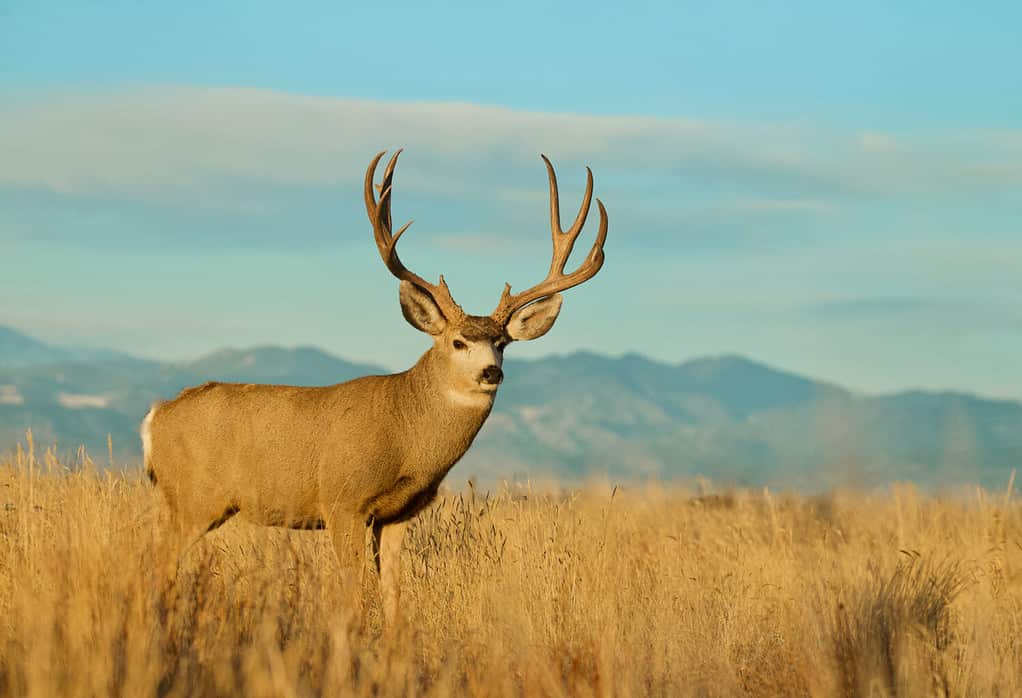
The abundance of deer and large bucks in West Virginia is what sets it aside from other states.
©Tom Reichner/Shutterstock.com
2. Diverse Range of Terrain
Deer prefer a variety of landscapes. When it comes to hunting, the best terrain depends on the type of deer and type of hunting. Some of their preferred habitats include hardwood forests, terrain edges, hillsides, riverbanks, thick covers, and more. In fact, you’ll likely even find deer roaming around suburban areas and neighborhoods.
Depending on your hunting desires or needs, you can choose from various types of hunting experiences and habitats, from urban backyard hunts in select cities and homeowners associations to wilderness hunting in the state’s national forests or on one of 96 state-owned or leased wildlife management areas (which span 493,000 acres). The state even has seven wildlife management areas specifically deemed “older-age deer management areas.”
West Virginia’s landscape is extremely diverse. Different portions of the state feature different terrains, ranging from mountain ranges and valleys to verdant forests and plateaus. Additionally, the state is situated within the Appalachian Mountains. This makes it easy for both bow and rifle hunting.
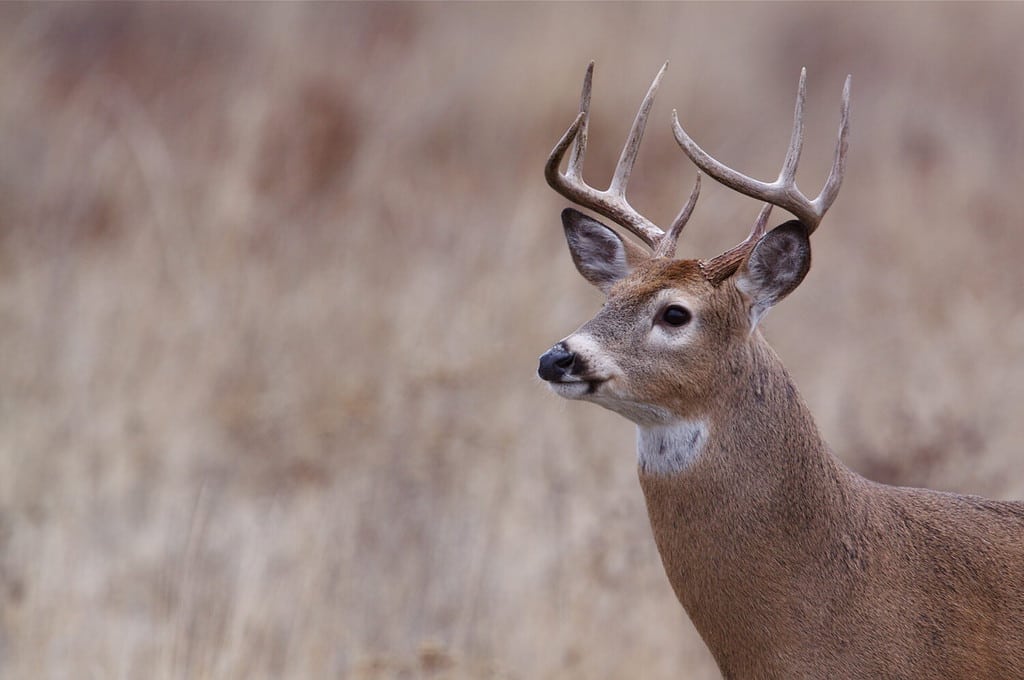
Deer typically browse for food at dawn and dusk.
©Tom Reichner/Shutterstock.com
3. Generous Deer Bag Limits
A deer bag limit refers to the number of deer you can harvest in a day/at one time. Bag limits exist to help sustain a healthy population of deer (or other wildlife) while also encouraging healthy deer management.
In West Virginia, hunters reap a pretty generous deer bag limit. These limits differ based on the county/location, the hunting season, and the type of deer (antlered or antlerless). However, statewide, hunters are usually limited to three antlered bucks per year. This includes all combined hunting seasons.
However, recently, West Virginia reduced its bag limit for the 2024 buck season. According to Steve Rauch, Assistant Chief of Game Management for the West Virginia Division of Natural Resources (DNR), the bag limit is now reduced to two antlered deer per season, which will go into effect in September of 2024 — in time for buck archery season.
There is also the opportunity for Urban Deer Archery Hunts, which some municipalities are approving to help manage the state’s deer population. For instance, Morgantown, West Virginia, stated that they allowed the use of Urban Deer Archery Hunts to help reduce the deer population in their community. They also donated the venison to local kitchens and shelters to help feed the homeless. This year, the special urban deer archery season opened on September 9 and will run through December 31 (with another split from January 8 to January 31, 2024).
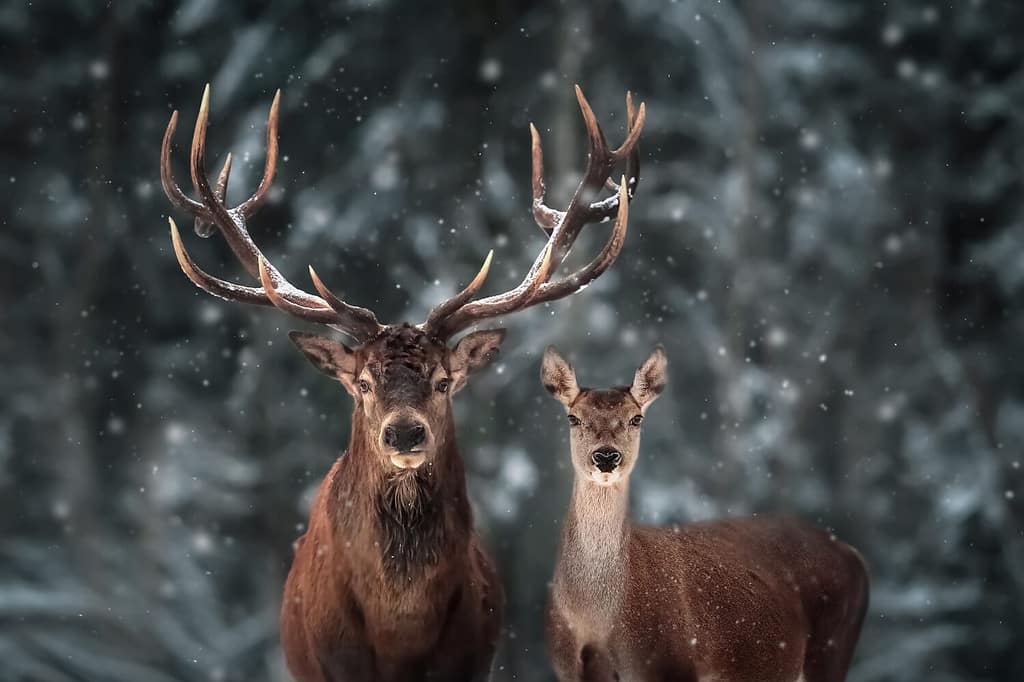
Hunting season often takes place during snowy weather.
©Delbars/Shutterstock.com
4. Extended Deer Hunting Seasons
Typically, deer season is open in the fall and early winter — lasting for four months. This includes late September until the end of the year/early the following year. Most of the dates are the same statewide, but some differ depending on the county. There are also different types of hunting seasons, including Buck Firearm, Archery and Crossbow, Muzzleloader, Antlerless, and Youth/Class Q/Class XS.
Keep in mind that specific registrations and licenses are required for hunting deer in West Virginia. When hunting, bring your license, stamp, and valid picture identification.
The finalized 2023-2024 deer hunting seasons are as follows:
Species Dates
| Deer (Buck Firearms) | November 20, 2023 to December 3, 2023 |
| Deer (Archery and Crossbow) | September 30, 2023 to December 31, 2023 |
| Deer (Muzzleloader) | December 11, 2023 to December 17, 2023 |
| Deer (Antlerless) | October 26, 2023 to October 29, 2023November 20, 2023 to December 3, 2023December 7, 2023 to December 10, 2023December 28, 2023 to December 31, 2023 |
| Deer (Youth/Class Q/Class XS) | October 21, 2023 to October 22, 2023December 26, 2023 to December 27. 2023 |
| Mountaineer Heritage Season (primitive weapon) – Deer, bear and turkey | January 11, 2024 to January 14, 2024 |
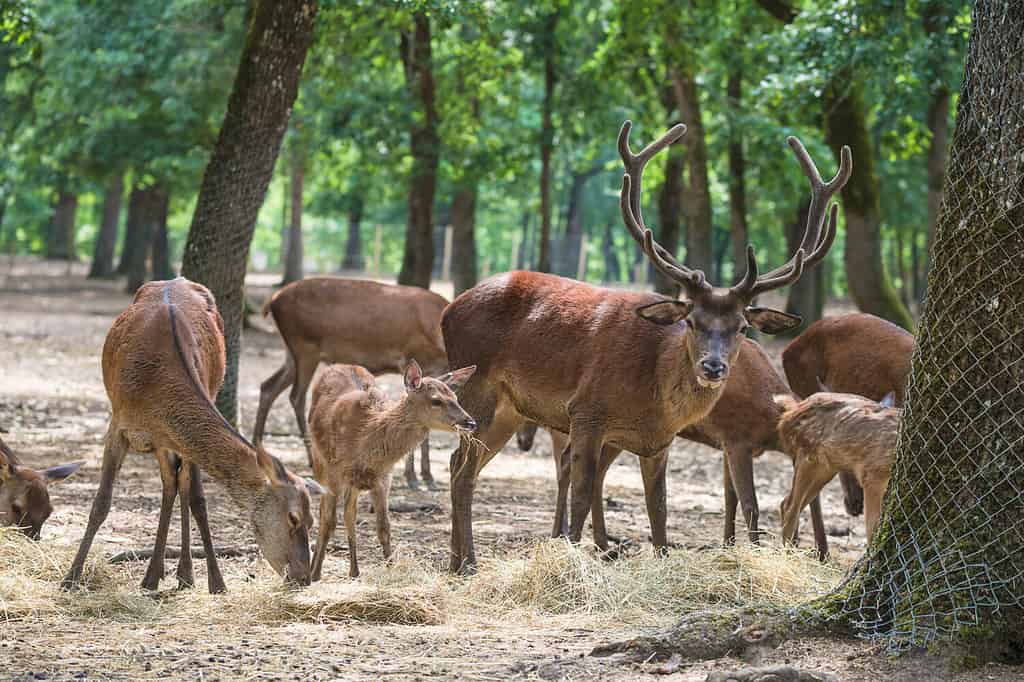
A
group of deer
is most commonly called a herd and sometimes a bevy, a rangale, a bunch, or a parcel.
©Stsvirkun/Shutterstock.com
5. Welcoming Hunting Culture and Community
Because hunting is a tradition of the Appalachian culture, West Virginia has a rich hunting history. Residents of the state are typically welcoming of others and cultivate a sense of community. Additionally, there are various accommodations for hunters, such as lodges and cabins. There are also numerous public lands, state and national forests, and wildlife management areas that provide access to ideal hunting grounds.
Hunters can also enjoy the variety of hunting and outdoor sports stores across the state, many of which provide the necessary hunting supplies to set you up for success.
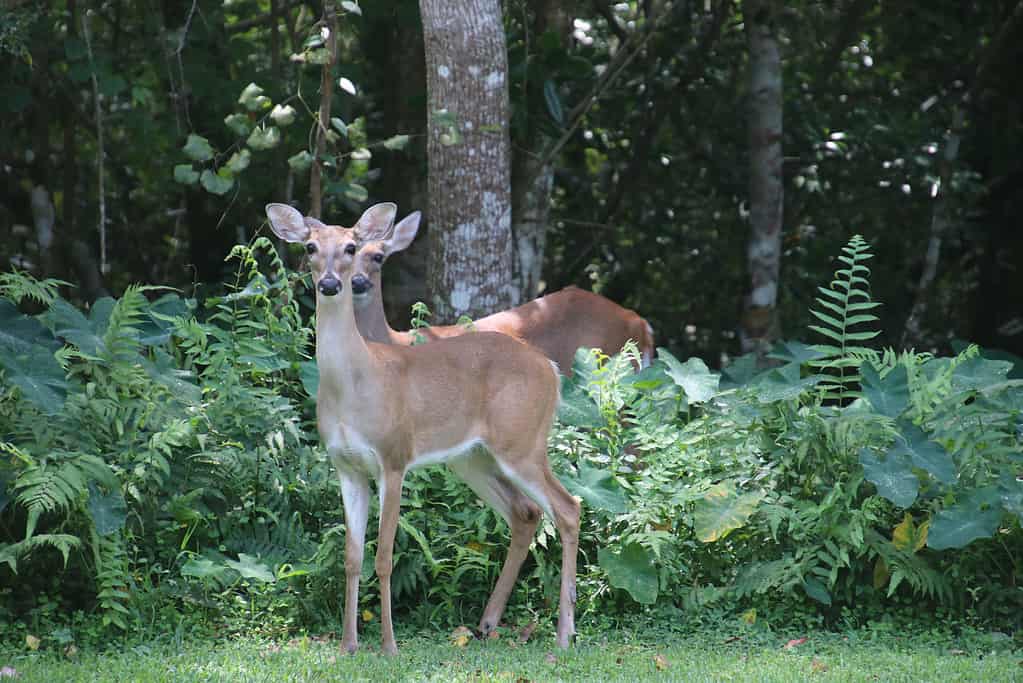
Deer eat lush vegetation, which is why you’ll often find them in or near a forest.
©Barb Elkin/iStock via Getty Images
6. Conservation Efforts
The West Virginia Division of Natural Resources (WVDNR) strives to “provide and administer a long-range comprehensive program for the exploration, conservation, development, protection, enjoyment, and the use of the natural resources of the State of West Virginia.” The program seeks to manage and conserve different wildlife populations, including white-tail deer, to help maintain a healthy ecosystem while still providing ample opportunities for hunters.
Additionally, the state also has a non-profit organization called the West Virginia Deer Association (WVDA). Created by a group of deer enthusiasts, the association is dedicated to improving West Virginia’s deer herds “through education, conservation, and the promotion of quality hunting opportunities for all West Virginia hunters.”
These — and other — conservation efforts help keep hunting alive and well within the state.
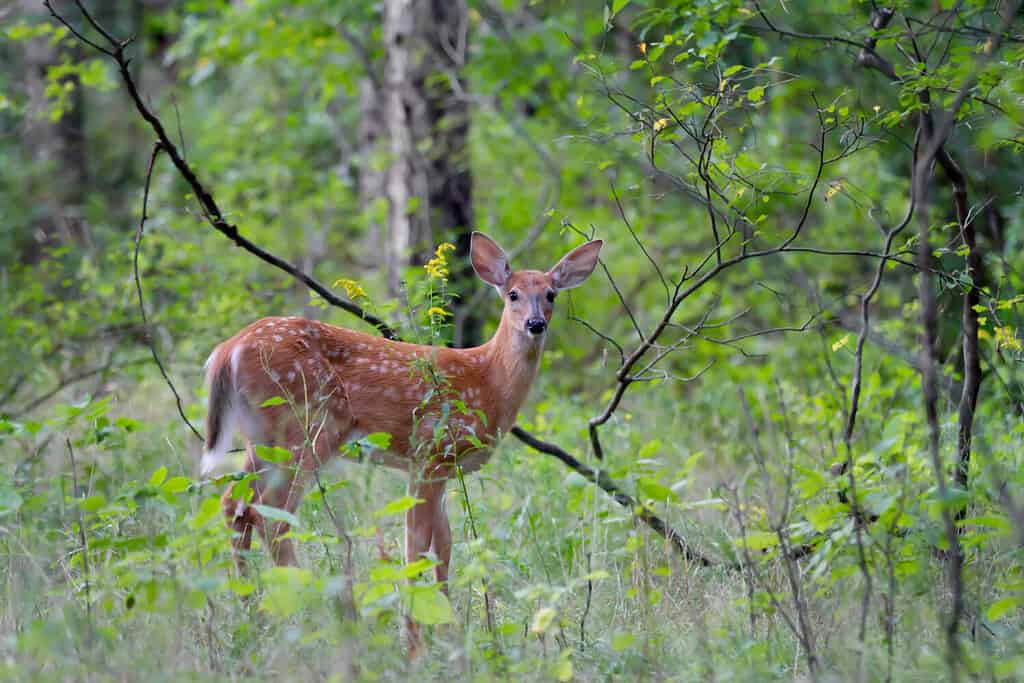
Deer often freeze when they’re afraid.
©Jim Cumming/Shutterstock.com
7. Beautiful Scenery
While hunting isn’t for the aesthetics, it doesn’t hurt that West Virginia’s landscapes offer breathtaking views for hunters. From its mountainous views to its open fields, the state’s natural and picturesque scenery provides a peaceful escape for hunters to unwind while connecting with nature and doing what they love. Many hunters travel across the country for this very reason — and it’s just an added bonus that the hunting opportunities are superb.
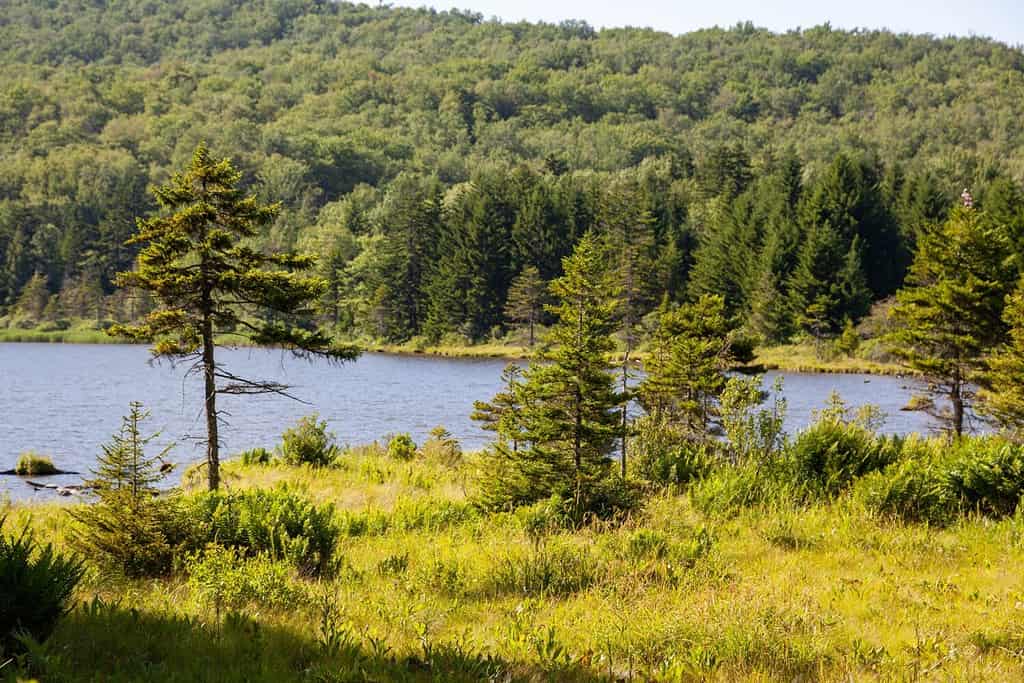
West Virginia features gorgeous, diverse landscapes you can enjoy while hunting.
©Ryan Breiding/Shutterstock.com
The photo featured at the top of this post is © iStock.com/twildlife
Thank you for reading! Have some feedback for us? Contact the AZ Animals editorial team.




